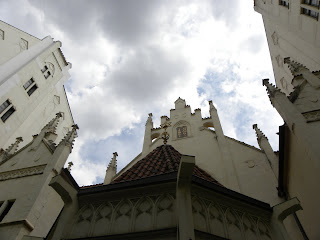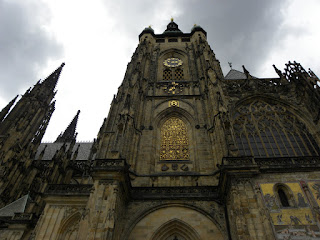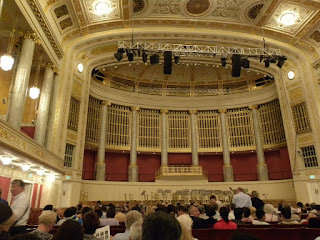Fifty-one days ago, I left home for my grandparents' hometowns. Going back was important to me, because it was just that--going back--not just visiting, or seeing, but actually going back in time the best that I could. What (and who) was still there I could only imagine, and traces of my grandparents' lives there I could only hope to see. But somehow I knew that going back wouldn't be for nothing. I just had a feeling that I would find something.
Over the course of the trip, I learned to trust that feeling, and I learned to trust signs. I had a feeling that Mama Manya's house would still be there, and when I noticed the stairs and flowers on the house, I knew that it was hers. When we went to visit Szczebrzeszyn and the sun came out when we found the synagogue, I knew that there was more to discover. As I found, there always was more to discover. But I didn't discover anything just by chance--I do believe I was very lucky, but I think a lot of it had to do with persistence. The fact that my grandparents' names and the names of their family members were in books and files in Ukraine and Poland was the strangest feeling for me, and it was what drove me to open every book and check every file, even to find the smallest details. With every detail, the pictures grew clearer, and the stories made more sense. While new information raised new questions, I found so many answers. I feel so much closer to not only my grandparents, but also their families--my family--because of all of the new information I've learned about them, and that's probably the greatest souvenir I could have received.
In a way, going back to my grandparents' hometowns was like visiting Israel for the first time--it was that same sense of going back to an ancient homeland, a place so connected with Jewish heritage and history. Visiting the synagogues and cemeteries in Europe felt just as sacred and important to me as visiting similar sites in Israel. That's why it was such an interesting experience to visit Israel again after being in Europe. While Europe today is obviously not what it once was in terms of Jewish life and culture, I think that to some degree, Israel's open, "on-the-streets" Judaism is probably reminiscent of what it would have been like to be Jewish in pre-war Europe.
Following in my grandparents' footsteps, I came to appreciate their lives in the context of the rich, diverse, and thriving Polish Jewish community of the 19th and early 20th centuries. That community is often painted in the light of Fiddler on the Roof, as small groups of poor people living in modest wooden homes with cows in the backyard--what people typically think of as the shtetls. But it's important to recognize that it wasn't all like that, and people lived very good lives in Poland. Jews were involved in culture, business, politics, and for the most part, weren't set apart from their non-Jewish peers. If anyone asked, they were Polish, as much as their Roman Catholic neighbors down the street. I think that people too often think that just because we feel so safe and successful here in America, that it couldn't have been like this anywhere else. But that's not true. Jewish life in pre-war Poland was just as vibrant, if not more vibrant, than American Jewish life today, and I think that it's important to remember that when thinking about what was lost in the war.
But after visiting my grandparents' towns, where I got a sense of what it was like for them growing up, then seeing and learning about where they experienced wartime, then experiencing what post-war life in Europe must have been like, and then being in Israel, a major destination of post-war immigration, I can safely say that it's true: there's no place like home. With my grandparents' backgrounds in mind, it makes sense why they all chose to come to America--because of opportunities for work, success, safety, and happiness. It's easy to take all of this for granted, to be born into a time and place where everything is neatly placed on a silver platter. But I can't take it all for granted, because that would be forgetting the years of hard work that my parents, but especially my grandparents, put into creating this world for me to live in. I'm sure it was Mama Manya who taught me that before going forward, it's important to look back at where you came from. This summer was more than a look back, it was an experience back in the past, an exploration of where I came from. Going forward, I can be confident in my family's past as something beautiful and meaningful. The Holocaust shattered that life, but not completely. Physical structures survived, and more importantly, memories survived. For me, this trip was about learning to preserve those memories as best I could, whether through learning about my grandparents' families in the archives, seeing where they lived, or imaging their footprints on the same cobblestones streets where I walked. I've experienced a lot, and so I've learned a lot.
Last, I want to thank you, reader of my blog. I can't tell you how many times I've been excited and honored to hear about all the different people who've been following and reading, whether from the beginning or from somewhere along the way. It's been a pleasure to share my experiences with you, and I hope you've gotten a sense of the kind of appreciation I have for my grandparents' lives. I hope that you'll be able to pass on what I've learned and shared with you, now as witnesses to my grandparents' stories.
Signing off,
Ricky


































